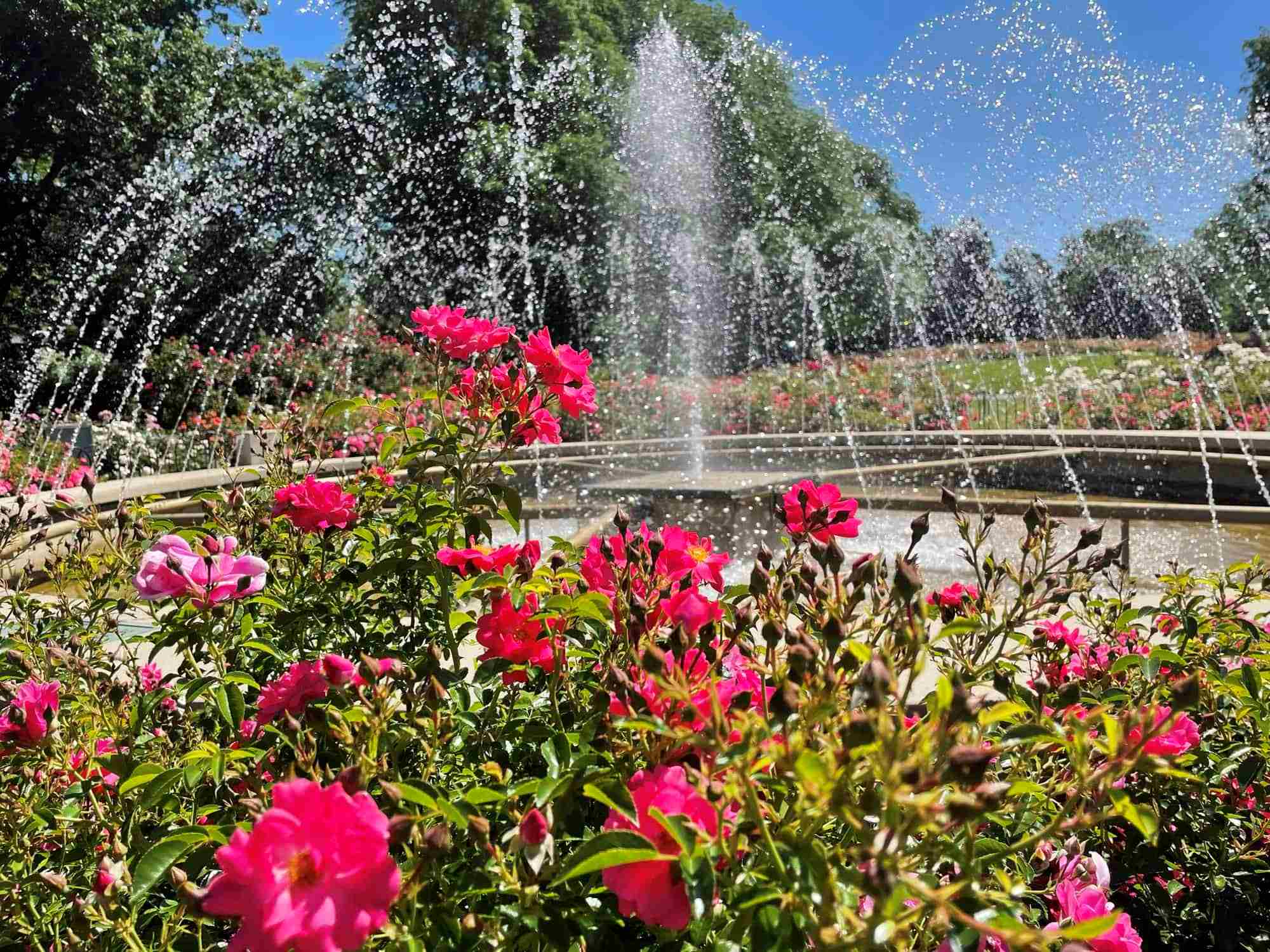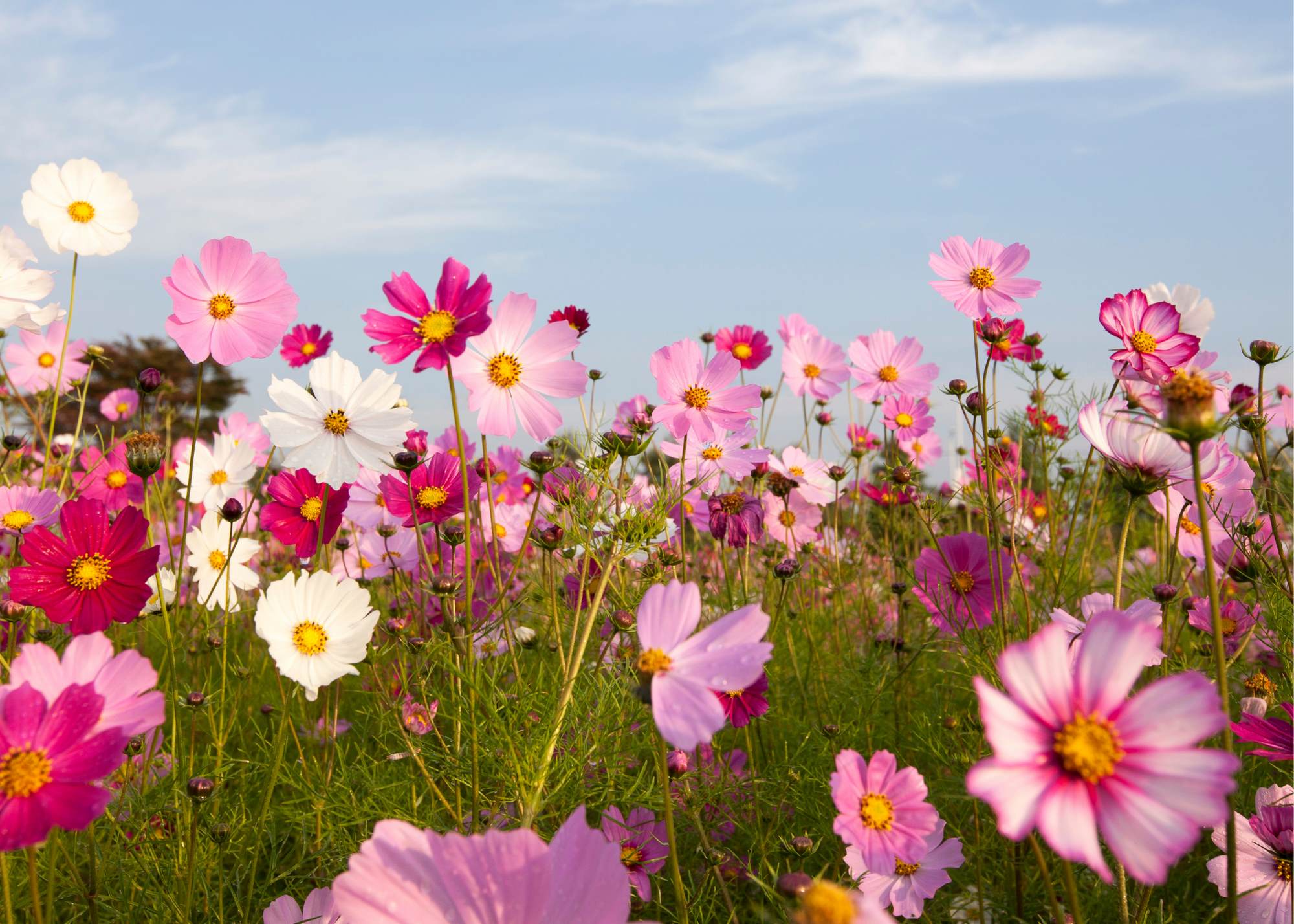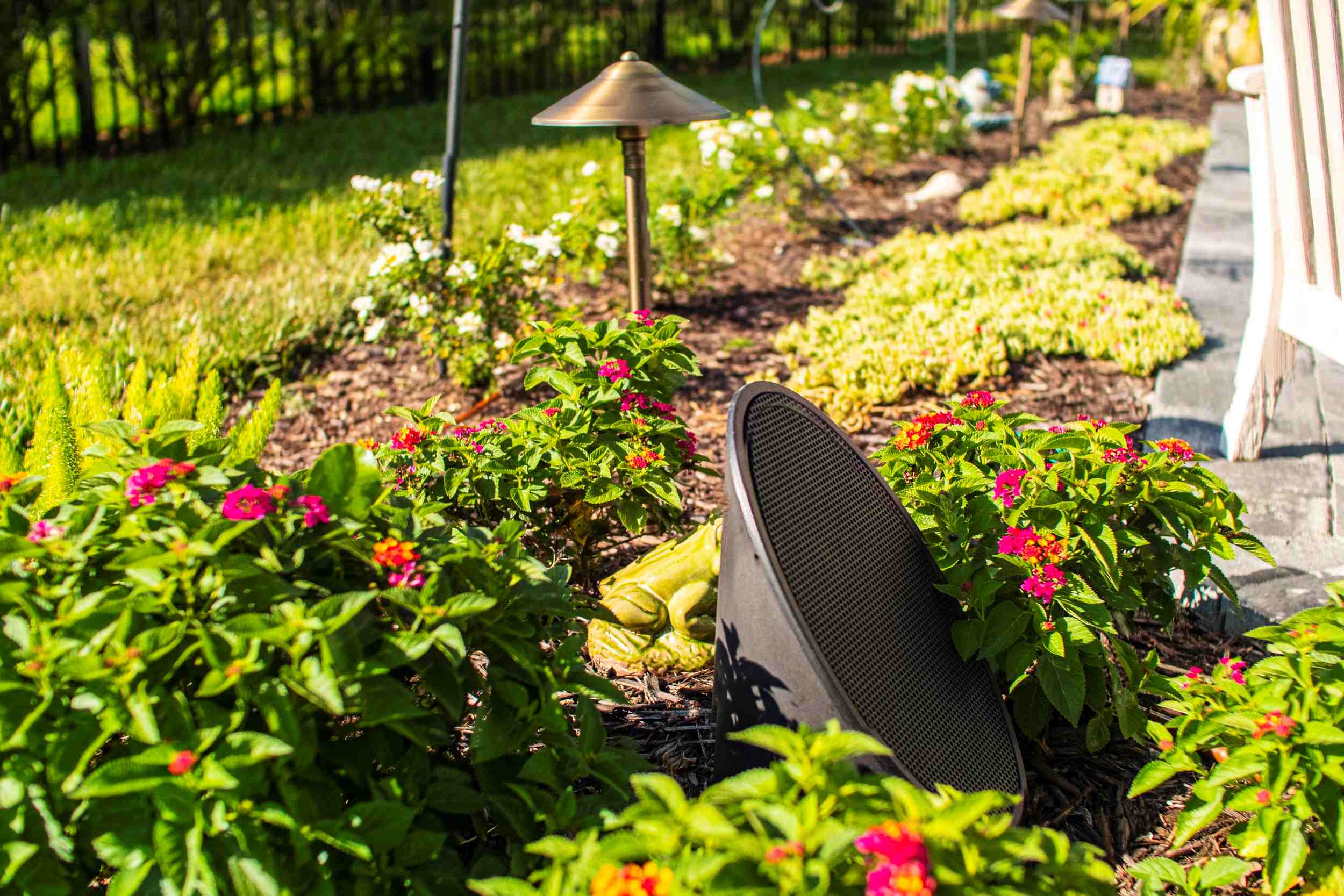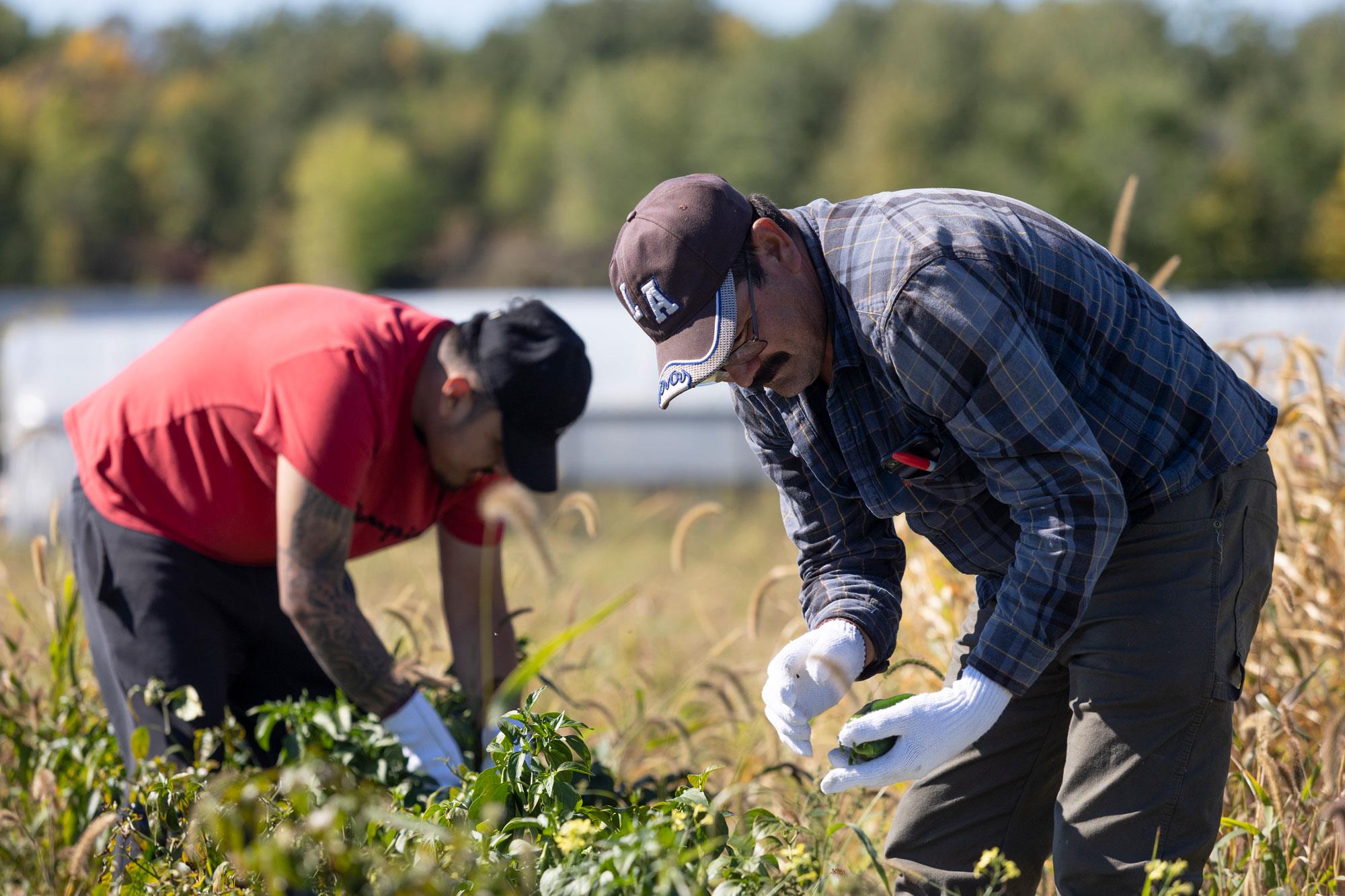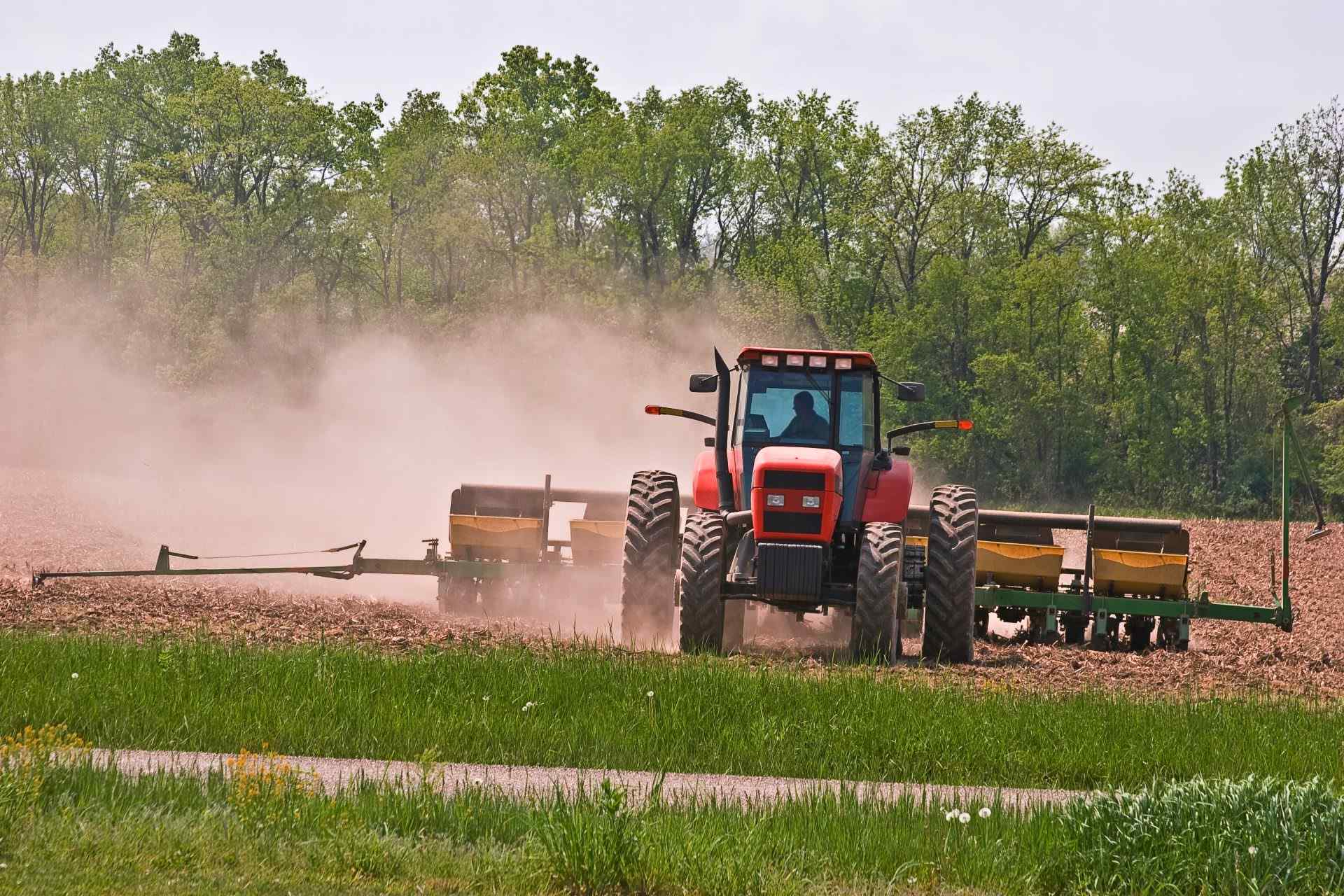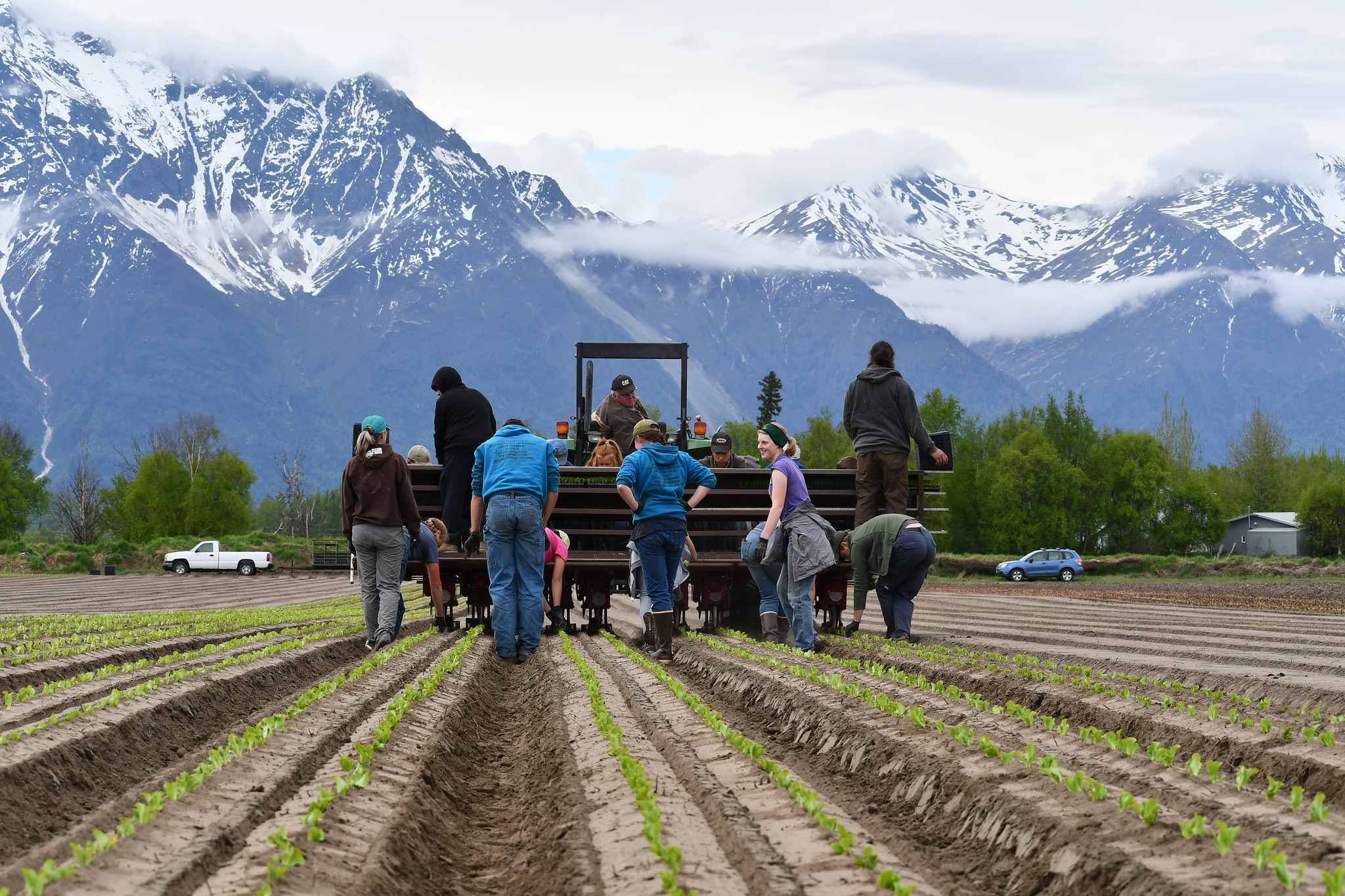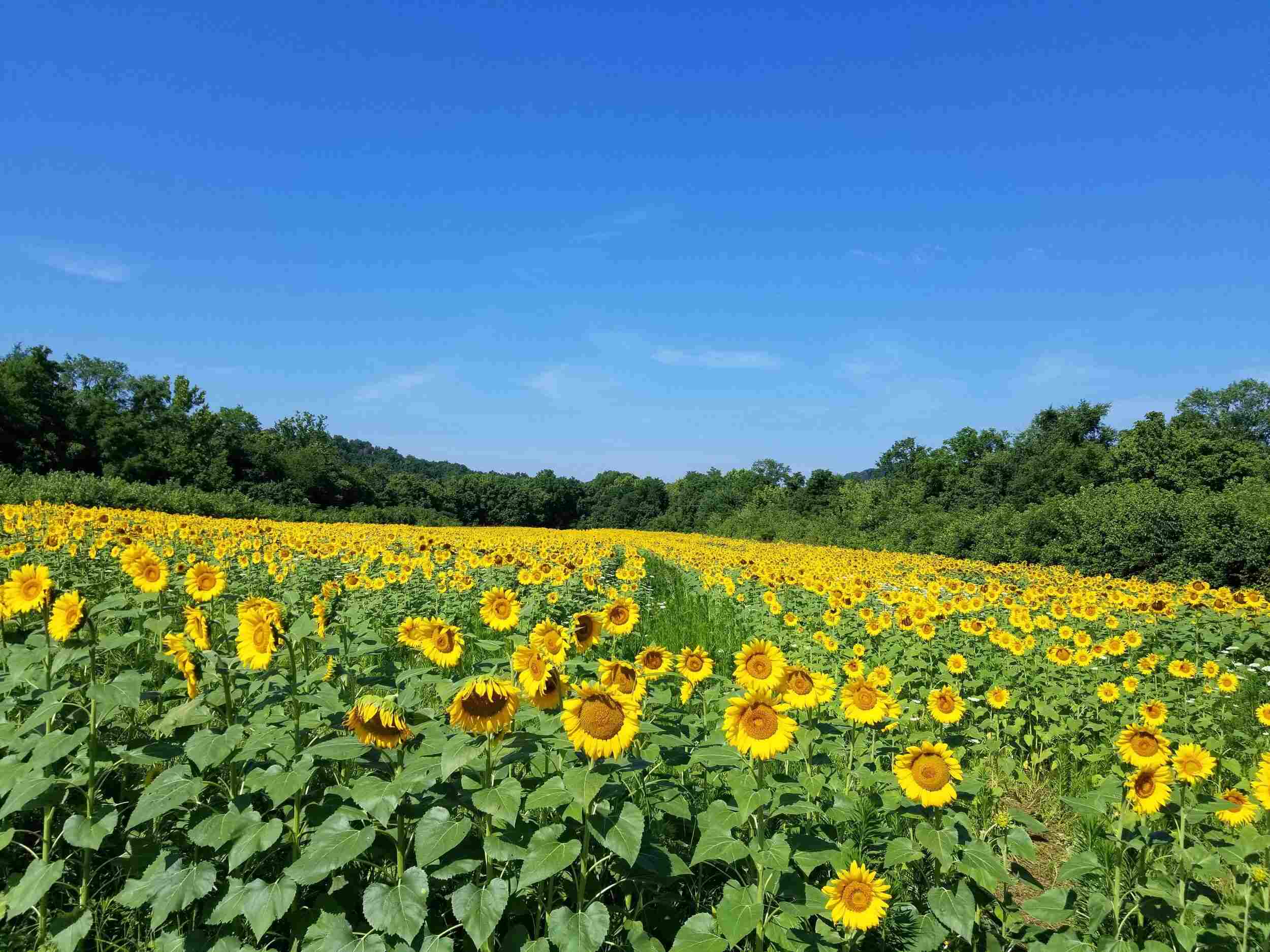Home>Gardening Basics>Understanding Soil>What Planting Zone Is Detroit Michigan
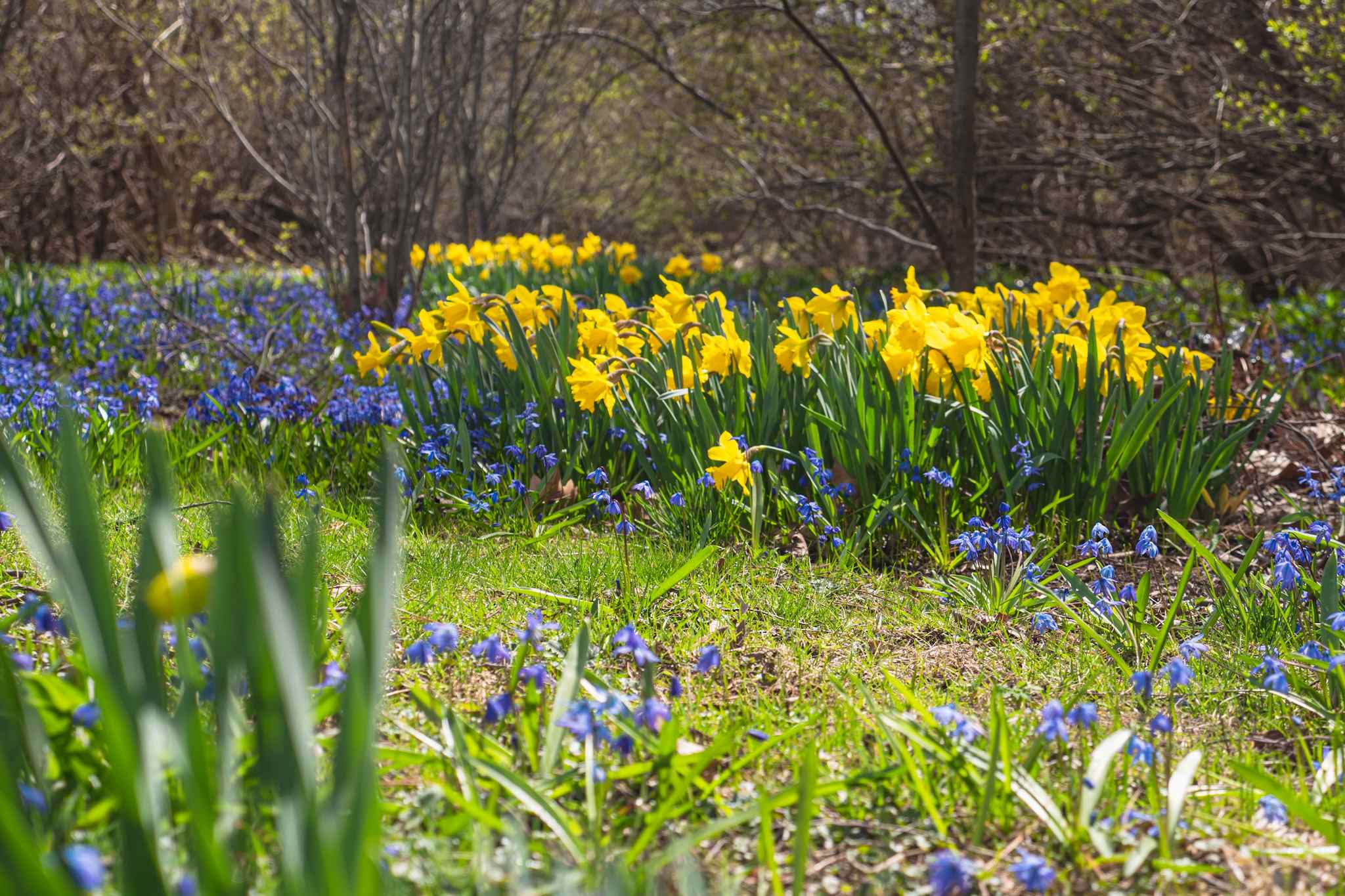

Understanding Soil
What Planting Zone Is Detroit Michigan
Modified: January 22, 2024
Discover the planting zone for Detroit, Michigan and learn how understanding soil types can enhance your gardening success. Explore the ideal conditions for growing in this region.
(Many of the links in this article redirect to a specific reviewed product. Your purchase of these products through affiliate links helps to generate commission for Chicagolandgardening.com, at no extra cost. Learn more)
Table of Contents
Introduction
Detroit, Michigan is a city known for its rich history, vibrant culture, and diverse population. It is also a city with a unique climate and environment that greatly affects the growth and survival of plants. Whether you are an avid gardener, a landscaping enthusiast, or simply someone who wants to add a splash of greenery to their surroundings, understanding the planting zones in Detroit is essential.
Planting zones, also known as hardiness zones, are geographical areas that are categorized based on their average annual minimum temperatures. These zones help gardeners determine which plants are most likely to thrive in their specific region. By understanding the planting zones in Detroit, you can make informed decisions about the types of plants that are suitable for your garden or landscape.
In this article, we will explore the factors that affect planting zones, discuss the climate and weather patterns in Detroit, and provide guidance on choosing the right plants for your specific zone. Additionally, we will explore methods for extending the growing season in Detroit, allowing you to enjoy a longer and more fruitful gardening experience.
By the end of this article, you will have a comprehensive understanding of the planting zones in Detroit, enabling you to create a beautiful and thriving garden that is perfectly suited to the unique environment of the Motor City.
Understanding Planting Zones
Planting zones, also known as hardiness zones, are a way to categorize regions based on their average annual minimum temperatures. The United States Department of Agriculture (USDA) developed the Plant Hardiness Zone Map, which divides the country into 11 zones based on temperature ranges. These zones help gardeners determine which plants are most likely to thrive in their specific region.
When it comes to planting zones, the lower the zone number, the colder the temperatures can get. For example, Zone 1 is the coldest zone, with average minimum temperatures dipping as low as -50°F (-45.6°C), while Zone 11 is the warmest zone, with average minimum temperatures staying above 40°F (4.4°C).
Understanding planting zones is crucial because different plants have different temperature requirements for optimal growth. Some plants are more cold-hardy and can withstand freezing temperatures, while others thrive in warmer climates. By planting appropriate plants for your specific zone, you are increasing the chances of successful growth and minimizing the risk of frost damage.
It’s important to note that planting zones are just one of the factors to consider when selecting plants for your garden. Other factors such as sunlight requirements, soil type, and moisture levels also play a significant role in determining the suitability of plants for a particular area. However, planting zones are a helpful starting point and can guide you in making informed decisions about which plants are likely to thrive in your region.
When determining the planting zone of a specific area, it’s essential to consider microclimates as well. Microclimates are localized climate variations within a larger zone, influenced by factors such as urban heat islands, proximity to bodies of water, and elevation. These microclimates can create small pockets of warmer or cooler temperatures within a larger zone, which may impact plant growth. Observing your garden’s specific microclimate is valuable in selecting the most suitable plants for your space.
Now that you have a basic understanding of planting zones, let’s explore the specific factors that affect planting zones in Detroit, Michigan.
Factors Affecting Planting Zones
Several factors influence the planting zones in a specific area, including climate, topography, and proximity to bodies of water. Understanding these factors can provide valuable insights into the unique planting conditions in Detroit, Michigan.
Climate: The climate of a region is a significant factor in determining the planting zones. In Detroit, the climate is classified as a humid continental climate, characterized by warm summers and cold winters. The average annual temperature in Detroit is around 50°F (10°C), with average lows in the winter dropping to 19°F (-7°C) and average highs in the summer reaching 82°F (28°C). These temperature ranges have a direct impact on the types of plants that can thrive in the area.
Temperature Extremes: Detroit, like many other regions, experiences temperature extremes throughout the year. While the average annual low temperature is above freezing, it’s not uncommon for the temperature to drop below 0°F (-18°C) during the winter months. On the other hand, summer temperatures can occasionally reach into the 90s°F (30s°C). These temperature fluctuations can impact the hardiness of plants and their ability to thrive in Detroit’s climate.
Topography: The topography of a region plays a role in determining planting zones. Detroit is located in the southeastern part of Michigan, with a relatively flat elevation. Flat areas typically experience less temperature variation compared to hilly or mountainous regions. However, nearby water bodies, such as the Detroit River and Great Lakes, can influence the local climate and create microclimates with cooler temperatures near the water.
Proximity to Water: Detroit is known for its proximity to the Great Lakes, specifically Lake Erie. The presence of large bodies of water can moderate temperatures, keeping the surrounding areas cooler in the summer and relatively warmer in the winter. This can influence the planting zones by creating slightly milder temperatures and extending the growing season compared to inland areas.
Urban Heat Island Effect: As a densely populated urban area, Detroit is susceptible to the urban heat island effect, which refers to the phenomenon of urban areas being warmer than the surrounding rural areas. The heat-absorbing properties of buildings, pavement, and infrastructure contribute to higher temperatures in urban environments. This can impact local planting zones by creating slightly warmer conditions, especially in downtown areas and highly developed neighborhoods.
By considering these factors, you can gain a better understanding of the specific planting zones in Detroit, enabling you to select plants that are well-suited to the local climate and environmental conditions. In the next section, we will delve into the specific climate and weather patterns of Detroit, Michigan.
Climate and Weather in Detroit, Michigan
Detroit, Michigan experiences a humid continental climate, characterized by four distinct seasons throughout the year. The climate in Detroit is influenced by its location in the Great Lakes region, as well as its proximity to the Detroit River and Lake Erie.
Summer: Summers in Detroit are warm and humid, with average high temperatures reaching the low 80s°F (around 28°C). Heatwaves are not uncommon, with temperatures occasionally exceeding 90°F (32°C). The great lakes can moderate the temperatures, providing some relief from extreme heat. It’s important to choose plants that can withstand heat and humidity during the summer months.
Fall: Autumn in Detroit is a picturesque season, with mild temperatures and colorful foliage. Average temperatures range from the 60s°F (around 15-20°C) in September to the 40s°F (around 5-10°C) in November. Fall is an ideal time for planting cool-season crops and bulbs that will bloom in the spring.
Winter: Winters in Detroit can be harsh, with temperatures dropping below freezing. Average lows range from the teens to the low 20s°F (around -5 to -7°C) during the coldest months. Snowfall is common, with an average of about 42 inches (107 cm) per year. Winterizing plants and providing adequate protection against frost and snow is necessary for successful gardening during this season.
Spring: Spring in Detroit brings a much-anticipated relief from the cold winter. Average temperatures start in the 40s°F (around 5-10°C) in March and gradually rise to the 60s°F (around 15-20°C) by May. Spring is an excellent time for planting cool-season vegetables and preparing the garden for the upcoming growing season.
The weather in Detroit can be unpredictable, with occasional extreme temperature swings and severe weather events. Thunderstorms and heavy rainfall are common during the summer months, while strong winds and lake-effect snow showers can occur during the winter. It’s important to monitor the local weather forecasts and take necessary precautions to protect plants from extreme weather conditions.
Understanding the climate and weather patterns in Detroit is essential for selecting plants that can thrive in this specific region. The next section will delve into the specific plant hardiness zones in Detroit, helping you further narrow down your plant selections for a successful garden.
Plant Hardiness Zones in Detroit, Michigan
Plant hardiness zones provide a valuable reference point for gardeners to determine which plants are most likely to thrive in a specific region. In the case of Detroit, Michigan, the city falls within USDA hardiness zone 6a.
Zone 6a is characterized by average minimum temperatures that range from -10°F to -5°F (-23.3°C to -20.6°C). This means that the lowest temperatures in Detroit during the winter months typically fall within this range. Gardeners in zone 6a can choose from a variety of plants that are well-suited to this level of cold hardiness.
When selecting plants for zone 6a, it’s important to consider their tolerance to freezing temperatures and their ability to withstand occasional temperature fluctuations. Many cold-hardy perennial flowers and shrubs, as well as cool-season vegetables, thrive in this zone.
Here are some popular plant choices for zone 6a in Detroit:
- Tulips: These early blooming flowers are a favorite in zone 6a gardens. Plant the bulbs in the fall for beautiful spring blooms.
- Hydrangeas: These stunning flowering shrubs are known for their large, showy blooms and can thrive in zone 6a with proper care.
- Tomatoes: Choose tomato varieties that are well-suited to cooler climates, such as determinate or early-maturing types.
- Lavender: This fragrant herb is a hardy perennial that thrives in zone 6a. It is known for its beautiful purple flowers and calming aroma.
- Peonies: These beautiful, long-lived perennials produce large, showy flowers in shades of pink, white, and red.
It’s important to consider other factors such as sunlight requirements, soil type, and moisture levels when selecting plants for your garden. These factors will help ensure that your chosen plants not only survive the winter cold but also thrive in Detroit’s unique growing conditions.
Keep in mind that these are suggested plant choices, and there are many more options available for a zone 6a garden in Detroit. It’s always a good idea to consult local nurseries or extension offices for specific recommendations based on your garden’s microclimate and individual preferences.
While zone 6a is the general hardiness zone for Detroit, it’s worth noting that microclimates within the city can vary. Factors such as proximity to the Great Lakes, urban heat islands, and elevation can influence temperature variations in localized areas. Observing your garden’s specific microclimate can help determine if you are at the colder or warmer end of zone 6a and guide your plant selections accordingly.
In the next section, we will explore methods for extending the growing season in Detroit, allowing you to enjoy fresh produce and vibrant blooms for an extended period.
Choosing Suitable Plants for Detroit, Michigan
When it comes to gardening in Detroit, Michigan, selecting suitable plants is key to creating a successful and thriving garden. Considerations such as the climate, hardiness zone, and specific growing conditions in Detroit should guide your plant choices.
Here are some essential tips to help you choose the right plants for your garden in Detroit:
1. Research Plant Hardiness: As mentioned earlier, Detroit is in hardiness zone 6a. Look for plants that are recommended for this specific zone to ensure they can withstand the winter cold and thrive in the region’s climate.
2. Choose Cold-Hardy Plants: Since Detroit experiences cold winters, selecting cold-hardy plants is essential. Look for plants that can tolerate freezing temperatures and occasional temperature fluctuations, as this will increase their chances of survival and growth.
3. Consider Sunlight Requirements: Determine the amount of sunlight your garden receives throughout the day. Some plants thrive in full sun, while others prefer partial shade. Choose plants that are suitable for the available sunlight in your garden to ensure optimal growth.
4. Evaluate Soil Conditions: Assess the soil type in your garden, whether it is sandy, clayey, or loamy. Different plants have varying soil preferences, so it’s important to select plants that will thrive in your specific soil conditions. Amending the soil with organic matter can also improve its fertility and structure.
5. Determine Watering Needs: Consider the moisture levels in your garden. Some plants require consistently moist soil, while others prefer well-draining conditions. Understanding the watering needs of your chosen plants will help you provide the appropriate amount of water and avoid over or under-watering.
6. Explore Native Plants: Consider incorporating native plants into your garden. Native plants are well-adapted to the local climate and growing conditions, making them more likely to thrive without extensive maintenance. They also provide important habitats for local wildlife and contribute to the region’s biodiversity.
7. Include Seasonal Varieties: Select plants that provide interest throughout the seasons. Incorporate early-blooming flowers, summer perennials, fall foliage, and winter-interest plants to ensure a visually appealing garden year-round.
8. Seek Expert Advice: Consult local gardening centers, nurseries, or cooperative extension offices for additional guidance. These professionals have extensive knowledge of regional gardening practices and can provide specific recommendations based on your location and preferences.
By considering these factors and tips, you can confidently choose suitable plants for your garden in Detroit, ensuring their resilience and success in the local growing conditions.
Now, let’s explore methods for extending the growing season in Detroit, allowing you to enjoy a bountiful harvest and vibrant blooms for an extended period of time.
Extending the Growing Season in Detroit, Michigan
Extending the growing season in Detroit allows gardeners to enjoy fresh produce and vibrant blooms for a longer period. It maximizes the potential of your garden and provides an opportunity to grow crops that might not typically thrive in the region’s shorter growing season. Here are some methods to extend the growing season in Detroit, Michigan:
1. Use Season Extenders: Season extenders such as cold frames, row covers, and hoop houses can help protect plants from frost and chilly temperatures. These structures create a microclimate that is warmer than the surrounding environment and shield plants from harsh weather conditions, allowing them to thrive for a longer period.
2. Start Seeds Indoors: Start seeds indoors before the last frost date in spring. This early start allows young seedlings to develop and become stronger, giving them a head start when they are eventually transplanted outside. This method is particularly useful for warm-season crops like tomatoes, peppers, and eggplants.
3. Utilize Mulch: Applying a layer of organic mulch on the soil surface helps regulate soil temperature and moisture levels. Mulch acts as an insulating barrier, protecting plant roots from temperature extremes and preventing moisture loss. This helps to extend the growing season and maintain plant health.
4. Plant Cool-Season Crops: Take advantage of the cooler temperatures in early spring and fall by planting cool-season crops. Lettuce, spinach, kale, radishes, and carrots are examples of vegetables that thrive in cooler weather. These crops typically have a shorter maturity period and can be harvested before the extreme heat of summer or frosty weather of winter arrives.
5. Protect with Floating Row Covers: Floating row covers act as a physical barrier against cold temperatures while allowing sunlight, air, and moisture to pass through. These covers can be draped over plants to provide an extra layer of protection against frost, extending the growing season for sensitive plants.
6. Grow Frost-Tolerant Plants: Select plants that are naturally frost-tolerant or more resistant to colder temperatures. There are various cold-hardy plant varieties available that can withstand late spring or early fall frosts without damage. Examples include certain varieties of broccoli, cabbage, Brussels sprouts, and hardy perennials like ornamental grasses.
7. Implement Intensive Gardening Techniques: Utilize intensive gardening techniques such as raised beds, vertical gardening, and companion planting to maximize space and encourage faster growth. These techniques optimize growing conditions and can help extend the growing season by providing more control over temperature, sunlight exposure, and overall plant health.
8. Take Advantage of Solar Radiant Heat: Positioning plants near south-facing walls or structures that absorb and radiate heat can create microclimates that are warmer than the surrounding environment. This additional heat exposure can extend the growing season and protect plants from frost damage.
By employing these methods, you can extend the growing season in Detroit, Michigan, and enjoy a greater variety of plants and crops throughout the year. Experimenting with different techniques and plant selections will help you discover what works best for your specific garden and local conditions.
Conclusion
Gardening in Detroit, Michigan presents unique challenges and opportunities due to its climate, hardiness zone, and specific growing conditions. By understanding the planting zones, climate, and factors that affect plant growth, you can make informed decisions and choose suitable plants for your garden.
Plant hardiness zone 6a encompasses Detroit, with average minimum temperatures ranging from -10°F to -5°F (-23.3°C to -20.6°C). This zone informs you about the cold-hardiness of plants and helps you select varieties that can thrive in Detroit’s winters.
Additionally, considering factors such as sunlight requirements, soil conditions, and water needs will further guide your plant selections. Exploring native plants, incorporating seasonal varieties, and seeking expert advice from local resources will enhance your gardening success.
To extend the growing season, utilize season extenders, start seeds indoors, use mulch, and focus on cool-season crops. These practices protect plants from frost and chilly temperatures, allow for early planting, regulate soil conditions, and ensure a continuous harvest throughout the year.
By implementing these strategies and adapting them to your specific garden and microclimate, you can overcome the challenges of Detroit’s climate and enjoy a thriving and productive garden that brings beauty and sustenance to your outdoor space.
Happy gardening in Detroit, Michigan!
